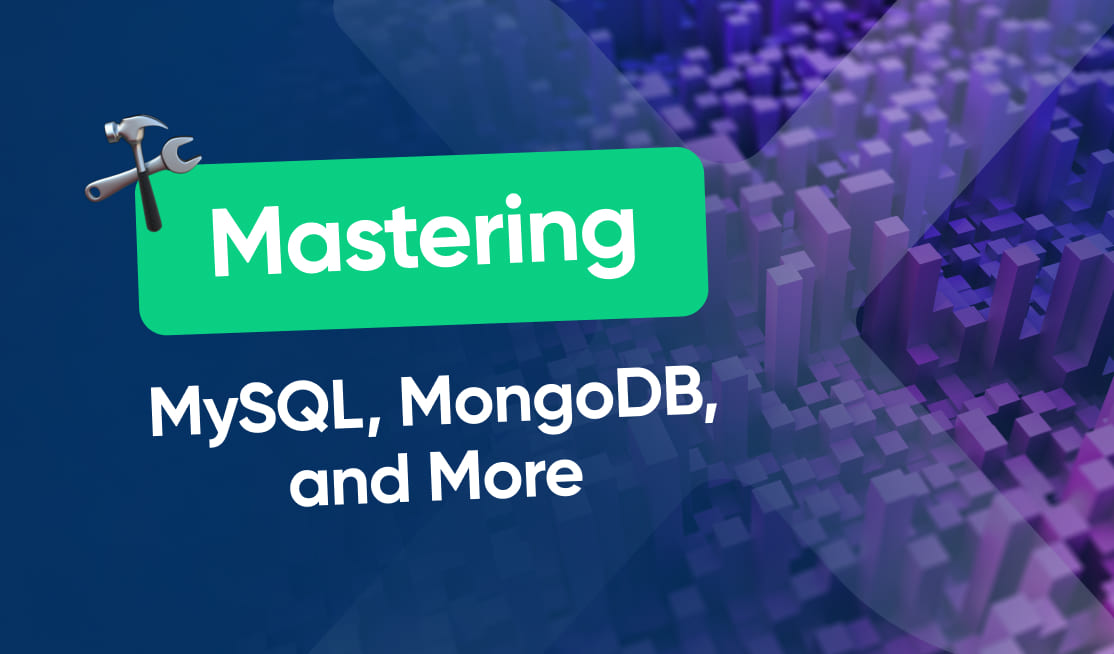
In today’s rapidly evolving digital landscape, working with databases has become an integral part of many software development projects. Whether you are building a web application, a mobile app, or even an enterprise-level system, databases are crucial for storing and managing large amounts of data efficiently and securely.
Understanding Databases
A database is a structured collection of data that is organized and stored in a way that allows for efficient retrieval, manipulation, and management. It acts as a central repository where data can be stored, accessed, and modified by multiple users or applications. Databases are designed to optimize data storage and retrieval while ensuring data integrity and consistency.
What is a Database?
A database consists of tables, which store the actual data, and relationships between those tables. It provides a way to structure and organize data based on predefined schemas, ensuring consistency and minimizing redundancy. By using different database management systems (DBMS), developers can choose the most suitable technology for their application’s requirements.
When it comes to understanding databases, it is important to grasp the concept of tables. Tables are the foundation of a database and are used to organize and store data. Each table consists of rows and columns, where each row represents a record and each column represents a specific attribute or field. For example, in a customer database, a table may have columns for customer ID, name, email, and address.
Furthermore, databases utilize relationships between tables to establish connections and dependencies. These relationships can be categorized into three main types: one-to-one, one-to-many, and many-to-many. In a one-to-one relationship, each record in one table is associated with only one record in another table. In a one-to-many relationship, each record in one table can be associated with multiple records in another table. Lastly, in a many-to-many relationship, multiple records in one table can be associated with multiple records in another table.
Types of Databases
There are various types of databases available, each with its unique characteristics and use cases. The two most common types are relational databases and NoSQL databases.
A relational database stores data in tables with predefined relationships between them. It is based on the relational model, where data is organized into rows and columns. Relational databases, such as MySQL, provide a structured approach to data storage, ensuring consistency through constraints like primary keys and foreign keys.
Relational databases offer several advantages, including data integrity, data consistency, and the ability to perform complex queries using SQL (Structured Query Language). They are widely used in applications that require structured and organized data, such as banking systems, inventory management systems, and customer relationship management (CRM) systems.
On the other hand, NoSQL databases, like MongoDB, offer more flexibility in data organization. They are designed to handle large volumes of unstructured or semi-structured data, such as JSON documents. NoSQL databases are known for their scalability, high performance, and ability to handle rapidly changing data models.
NoSQL databases are commonly used in applications that deal with big data, real-time analytics, content management systems, and social media platforms. They provide developers with the flexibility to store and retrieve data without adhering to a rigid schema, allowing for faster development and deployment cycles.
In addition to relational and NoSQL databases, there are other types of databases, such as hierarchical databases, network databases, and object-oriented databases. Each type has its own strengths and weaknesses, making it suitable for specific use cases and scenarios.
Introduction to MySQL
MySQL is one of the most popular relational database management systems used worldwide. It is an open-source DBMS that offers a rich set of features, making it an excellent choice for a wide range of applications.
MySQL was first released in 1995 and has since gained widespread adoption due to its reliability, performance, and ease of use. It is developed and maintained by Oracle Corporation, and its popularity can be attributed to its robustness and extensive community support.
MySQL is known for its scalability, allowing users to handle large volumes of data efficiently. It can handle thousands of concurrent connections and can be easily integrated with other technologies, making it suitable for enterprise-level applications.
Key Features of MySQL
One of the key features of MySQL is its comprehensive support for the SQL language, allowing developers to interact with the database through queries and statements. SQL, or Structured Query Language, is a standard language for managing and manipulating relational databases.
MySQL supports a wide range of SQL features, including complex joins, subqueries, and stored procedures. It also provides support for advanced data types such as JSON, spatial data, and full-text search, enabling developers to build sophisticated applications.
Additionally, MySQL provides support for transactions, which ensures data integrity and consistency even in complex operations. Transactions allow multiple SQL statements to be grouped together, ensuring that either all the statements are executed successfully, or none of them are executed at all. This is crucial for applications that require atomicity, consistency, isolation, and durability (ACID) properties.
Another notable feature of MySQL is its high availability and scalability. It supports various replication techniques, allowing for real-time data backups and the distribution of workload across multiple database instances. This ensures that even in the event of a hardware failure or heavy traffic, the system remains accessible and responsive.
MySQL also provides built-in security features to protect data from unauthorized access. It supports user authentication, encryption, and access control mechanisms, ensuring that only authorized users can access and modify the data.
Setting Up MySQL
Setting up MySQL is relatively straightforward. You can download and install it on your local machine or set it up on a server. MySQL provides robust documentation that guides you through the installation process, ensuring a smooth setup experience.
Once installed, you can configure MySQL to suit your specific requirements. You can define the storage engine, which determines how data is stored and retrieved, and set up replication for high availability. MySQL also offers various configuration options to optimize performance, such as buffer sizes, caching mechanisms, and query optimization techniques.
MySQL can be managed through a command-line interface or graphical tools such as phpMyAdmin and MySQL Workbench. These tools provide a user-friendly interface for performing common database administration tasks, such as creating databases, managing users, and executing SQL queries.
Basic MySQL Commands
Once MySQL is set up, you can start interacting with your database using SQL commands. Here are some basic MySQL commands to get you started:
- CREATE DATABASE: Creates a new database.
- CREATE TABLE: Creates a new table in the database.
- INSERT INTO: Adds new rows of data to a table.
- SELECT: Retrieves data from one or more tables.
- UPDATE: Modifies existing data in a table.
- DELETE: Removes data from a table.
These commands form the foundation of database manipulation in MySQL. With these basic commands, you can create and manage databases, define tables, insert and retrieve data, and update or delete existing records. As you become more proficient with MySQL, you can explore more advanced features and techniques to enhance your database management skills.
Working with MongoDB
MongoDB is a popular NoSQL database that is widely adopted for its flexibility and scalability. It uses a document-oriented model where data is stored in JSON-like documents called BSON (Binary JSON).
Understanding MongoDB
Unlike relational databases, MongoDB does not require a predefined schema for data storage. It allows developers to work with dynamic and evolving data structures, making it suitable for projects where the data model might change frequently.
Setting Up MongoDB
Setting up MongoDB involves downloading the appropriate installation package for your operating system and running the installer. MongoDB provides clear and concise installation instructions, ensuring a seamless setup experience.
Basic MongoDB Commands
Once MongoDB is set up, you can start interacting with the database using the MongoDB shell or programming language-specific drivers. Here are some basic MongoDB commands to help you get started:
- CREATE DATABASE: Creates a new database.
- CREATE COLLECTION: Creates a new collection within a database.
- INSERT: Adds a new document to a collection.
- FIND: Retrieves documents from a collection based on specified criteria.
- UPDATE: Modifies existing documents in a collection.
- DELETE: Removes documents from a collection.
Comparing MySQL and MongoDB
Both MySQL and MongoDB are popular choices for modern database management, but they excel in different areas. Let's compare them based on key factors:
Performance Comparison
MySQL is known for its exceptional performance when handling structured data and complex queries. It is highly optimized for transactions, making it ideal for applications that require strict data consistency and integrity.
On the other hand, MongoDB shines in scenarios where flexibility and scalability are top priorities. Its document-oriented model allows for fast data retrieval and schema-less updates. It can handle massive amounts of unstructured data efficiently, making it suitable for applications with constantly changing data structures.
Scalability Comparison
MySQL supports vertical scalability, which means you can increase the capacity of the server by adding more powerful hardware. However, it has limitations in horizontal scalability, where the workload is distributed across multiple servers.
Conversely, MongoDB is designed for horizontal scalability. It uses a sharding architecture that allows data to be distributed across multiple servers effortlessly. This enables applications to handle high traffic and massive data volumes without sacrificing performance.
Other Popular Databases
In addition to MySQL and MongoDB, there are several other popular databases worth exploring:
Introduction to PostgreSQL
PostgreSQL is a powerful open-source relational database management system renowned for its advanced features and compliance with SQL standards. It offers excellent performance, extensibility, and support for complex queries and transactions.
Introduction to Oracle Database
Oracle Database is a premier relational database management system used by large enterprises for mission-critical applications. It boasts high performance, robust security features, and advanced scalability capabilities to handle the most demanding workloads.
By familiarizing yourself with these other popular databases, you can broaden your technical skill set and choose the one that best suits your application’s requirements.
In conclusion, working with databases is a crucial aspect of modern software development. Whether you prefer the structured approach of a relational database like MySQL or the flexibility of a NoSQL database like MongoDB, choosing the right database technology is vital for building scalable, high-performance applications. By understanding the key features and differences between various databases, you can make informed decisions and leverage their strengths to create robust and efficient data-driven systems.


